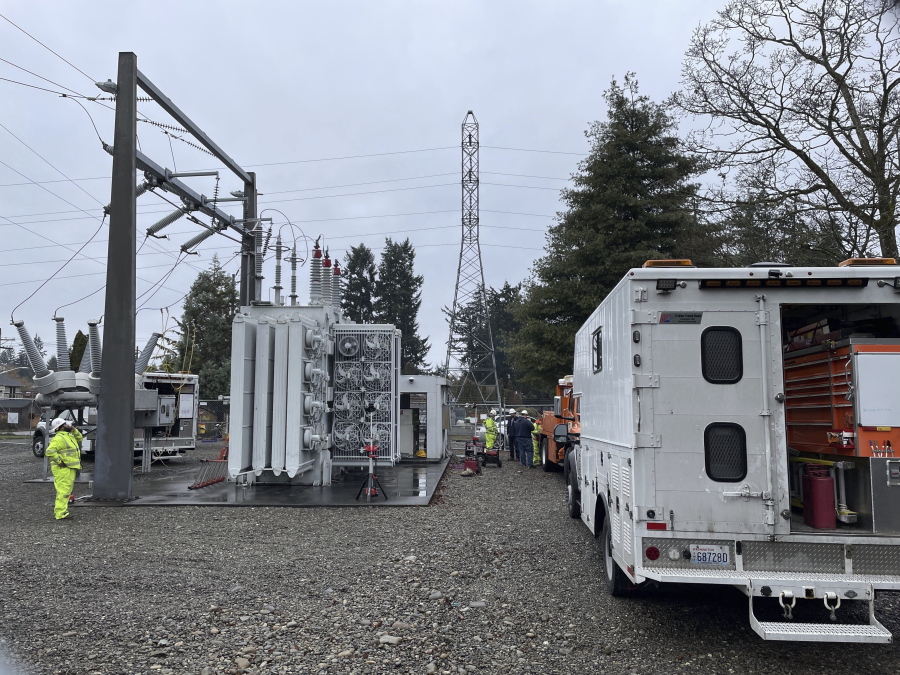SPANAWAY, Pierce County — Shortly after 5 a.m. on Christmas Day, Kathryn Henkel and her family were rousted by an unfamiliar quiet, a signal something was wrong.
The big-screen television in their living room, normally on through the night, cut off. So did the refrigerator — and the oxygen concentrator that helps her mother-in-law breathe.
The next lot over, a Puget Sound Energy electrical substation was dark. The constant hum of power had ceased.
“There was nothing. No movement or people,” Henkel recalled.
The substation near Spanaway was one of four tucked into forested neighborhoods in east Pierce County struck by sabotage on Sunday, which left more than 30,000 customers at least briefly without power, according to new information from Puget Sound Energy and Tacoma Power.



